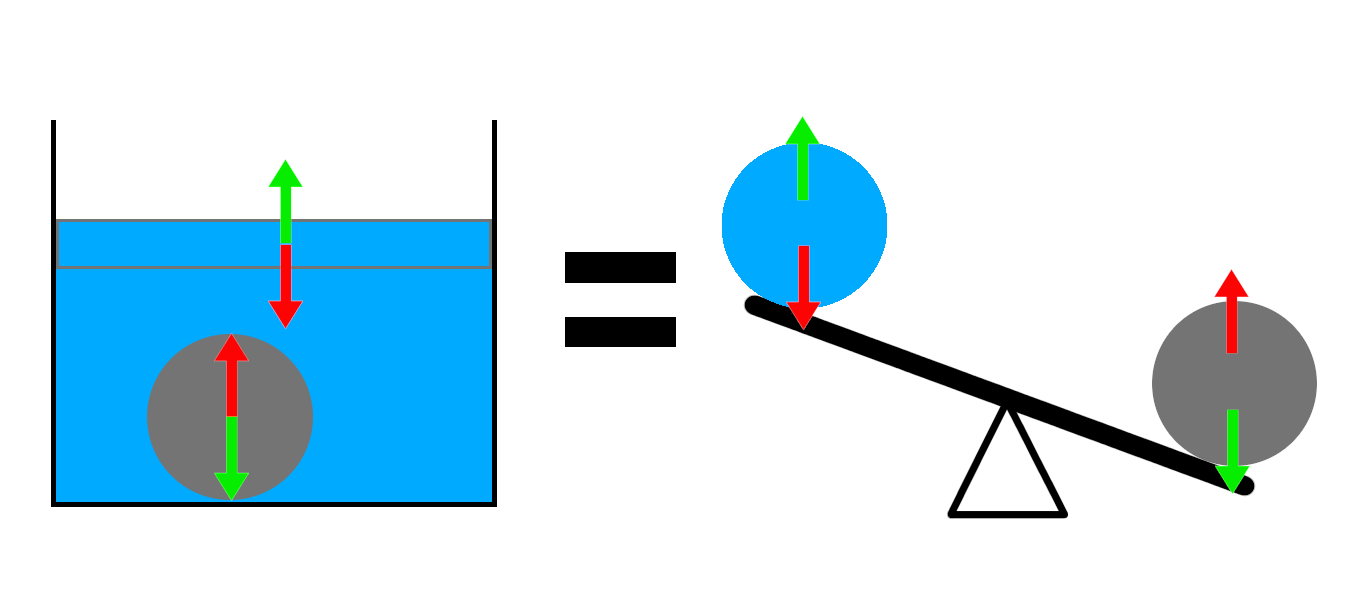Buoyancy
Buoyancy is the result of gravity pulling on both
the object and the water. Gravity pulls more
strongly on more dense objects because they have
more mass. When an object is pulled down into a
fluid by gravity, it necessarily pushes water up. In
this way, buoyancy can be thought of in the same way
as a seesaw. The heavier object will be forced down,
and will force the other up.
Buoyant force can be summarized with the equation F=
ρgV, where ρ is the density of the fluid, g is
acceleration due to gravity, and V is the volume of
the object.

Buoyancy can also be approached from a potential
energy perspective. When the object and an equal
volume of water are lifted the same height and under
the same acceleration, the more dense one will have
a higher potential energy as per the equation U =
mgh. (The water does not necessarily need to be
lifted the same height as the object because the
volume of the water is determined not only by the
height raised but also by the area of the surface of
water that is raised.) The lighter one will
therefore be pushed up, as this is the lowest energy
state possible for the system. It will therefore
attempt to reach this energy state, and changing it
require the input of more energy.
All objects experience buoyant forces, even those
that are more dense than the fluid they are in.
Objects are always lifted upwards with a force equal
to the volume of fluid displaced by the object. This
is why it is easier to lift rocks underwater. If the
object i more dense than water, it's weight is
therefore greater than the water, and more than the
buoyant force, which causes it to sink. This does
not mean that the buoyant force is gone, but rather
that the force of gravity is stronger. This is
consistent with the seesaw analogy, because while a
heavier mass is brought down on a seesaw, the weight
of the lighter mass still pushes upwards on it, and
effectively decreases its weight.


|